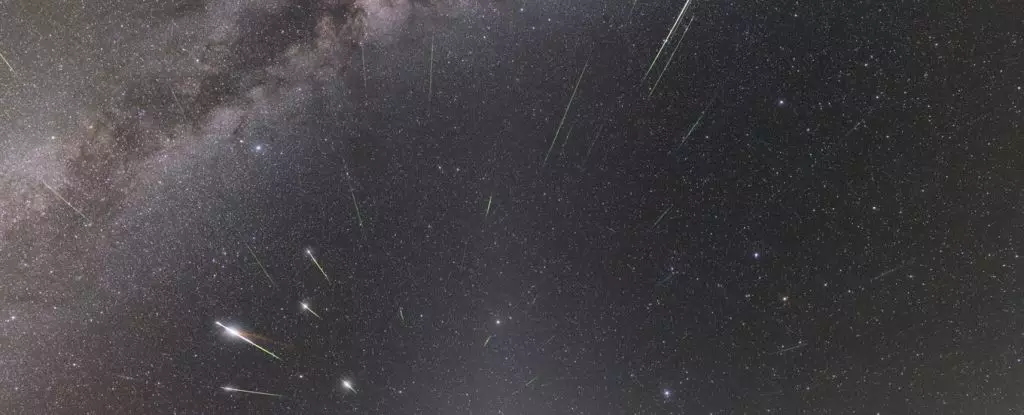As spring gives way to warmer temperatures, the night sky offers a breathtaking spectacle that stargazers won’t want to miss—the peak of the Eta Aquariid meteor shower. Set to peak between May 5 and 6, this annual event invites both seasoned astronomers and casual observers to take a moment from their busy lives and immerse themselves in the wonders of the cosmos. Although the Eta Aquariids will continue to grace our skies throughout May, the grand display during its peak promises a dazzling array of shooting stars to behold.
What makes meteor showers so enchanting is not just the beauty of their fleeting trails, but also the astronomical phenomena behind them. Each meteor streaking across the firmament is a remnant of a comet or asteroid that our Earth passes through during its yearly orbit around the Sun. The Eta Aquariids originate from the debris of Halley’s Comet (1P/Halley), one of the most famous comets, known for its spectacular appearance every 76 years. As Earth traverses through this cosmic dust cloud, we encounter a vivid manifestation of the universe’s infinitude and mystery.
The Best Viewing Conditions
To maximize your meteor-watching experience, careful planning is necessary. A successful observation involves finding a comfortable spot equipped with a clear line of sight toward the sky. This requires more than just a physical location; it demands a mindful spirit ready to connect with the vastness above. Although the Moon will reach 64 percent visibility during the peak, fear not! It sets before the radiant point of the shower rises, allowing for optimal viewing conditions where the darkness enhances the brightness of the meteors.
Timing is crucial too. The best viewing will occur in the early hours before dawn, particularly for those located in the Southern Hemisphere where meteor counts may soar to 50-60 per hour. In contrast, stargazers in the Northern Hemisphere can also partake, albeit with reduced visibility, expecting around 30 meteors per hour. But let’s not forget that just stepping outside under a starry blanket can transform an ordinary night into an extraordinary experience—regardless of where you live.
Understanding the Science Behind the Show
For those curious about the science that fuels this stellar show, it’s fascinating to note how meteor showers can illuminate vast stretches of the sky. When Earth encounters particles left behind by Halley’s Comet, they collide with our atmosphere at astonishing speeds—often exceeding 70 kilometers per second—creating blinding trails as they incinerate upon atmospheric entry. This phenomenon is not only visually stunning but also serves as a remarkable opportunity to witness nature’s forces at work.
For many, the real joy of meteor-watching lies in acknowledging the harsh, beautiful reality: these moments are fleeting. Each meteor that sparks across the sky is a reminder of life’s transience and the wonder around us. So, as you lie back and gaze upward, the whizzing specks serve not only as entertainment but as poignant illustrations of our shared human experience in a universe filled with awe.
A Week of Celestial Magic
It’s essential not to feel disheartened if the peak viewing nights pass you by; shadows of the Eta Aquariids will linger until about May 28. Even as the intensity wanes, those remaining nights are still filled with the chance to witness these cosmic wonders. This year’s meteor shower encourages an attitude of flexibility; it’s an invitation to engage with the universe on your own terms.
To ensure you’re well-prepared, consider downloading the International Meteor Organization’s 2025 meteor shower calendar. Such resources not only enhance your knowledge but ensure you stay engaged with the many cosmic events throughout the year. Fortunately, opportunities to marvel at the wonders of the universe are abundant.
So grab a blanket, embrace the stillness of the night, and prepare for a possibility of witnessing glorious trails of light streaking across the heavens. The Eta Aquariids are not merely a spectacle; they are a celebration of our planet’s journey through the cosmos. Embrace the magic, and let it remind you of the beauty surrounding us every day.

